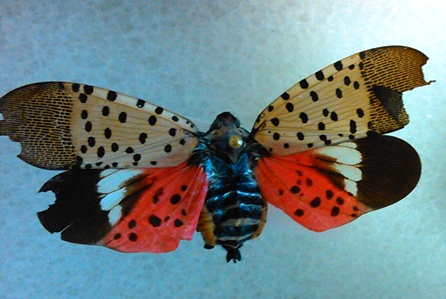
What should you be doing right NOW about the Spotted Lanternfly?
- KILL adult bugs.
- LOOK for egg masses.

- SCRAPE and DESTROY them!
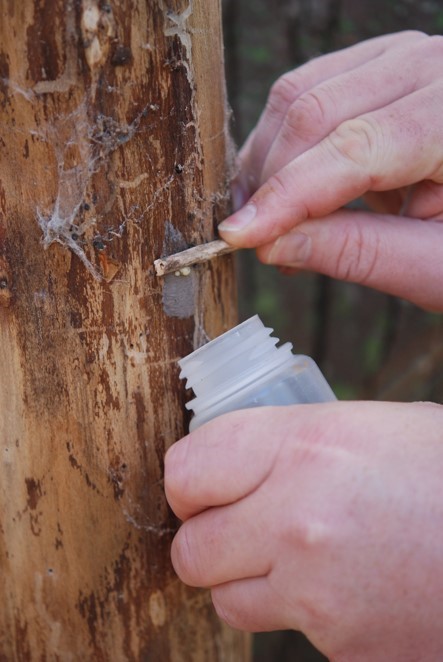
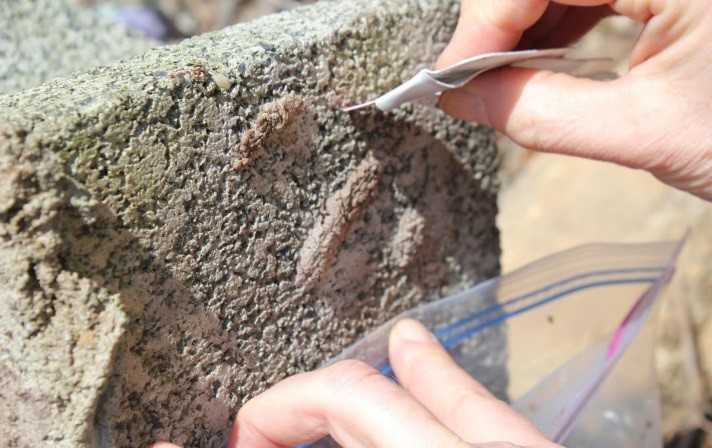 SCRAPE THOSE EGGS! Spotted Lanternfly lay eggs from September until the first frost. Walk around your property to check for egg masses on trees, cement blocks, rocks, and any other hard surface. If you find egg masses on your property from September to June, you can scrape them off using a plastic card or putty knife (Figure 3). Scrape them into a bag or container filled with isopropyl alcohol or hand sanitizer. This is the most effective way to kill the eggs, but they can also be smashed or burned. Remember that some eggs will be laid at the tops of trees and may not be possible to reach. Every egg mass can contain 30-50 eggs which will hatch in the spring. Scraping and destroying eggs now is the best means of control. You are literally killing the next generation!
SCRAPE THOSE EGGS! Spotted Lanternfly lay eggs from September until the first frost. Walk around your property to check for egg masses on trees, cement blocks, rocks, and any other hard surface. If you find egg masses on your property from September to June, you can scrape them off using a plastic card or putty knife (Figure 3). Scrape them into a bag or container filled with isopropyl alcohol or hand sanitizer. This is the most effective way to kill the eggs, but they can also be smashed or burned. Remember that some eggs will be laid at the tops of trees and may not be possible to reach. Every egg mass can contain 30-50 eggs which will hatch in the spring. Scraping and destroying eggs now is the best means of control. You are literally killing the next generation! - REMOVE and TREAT Tree of Heaven.
- USE sticky bands to catch bugs crawling up the tree. Note: bands can be cut into thirds. Thin bands work just as well! Note: Sticky bands may catch other insects or animals.
- TREAT trees or bugs with chemicals if necessary (see chart below).
- LOOK before you leave. Make sure you are not taking the bug or egg masses with you!
If you have a large property infested with Spotted Lanternfly and/or Tree of Heaven, and would like to add your property to the list for evaluation of treatment, please email pkisch@amitytownshippa.com or call 610-689-6000, ext. 222. *Please note: Funding is not yet in place. Final determination of properties to be treated will be made by representatives at the Berks County Conservation District.
Own a business, need a permit to cover your business for the spotted lanternfly regulations? Visit this link for more details: Permit Process
Chemical Control
Insecticides can be contact, systemic, or both, and may vary greatly in the length of control after application (i.e., residual activity). Contact insecticides kill SLF when the chemical contacts the insect as a direct spray to the adult or nymph, or when the pest walks over a surface with pesticide residue on it. Systemic insecticides are absorbed by the tree through sprayed leaves, roots, and or woody tissue and are moved by its vascular system to other parts of the tree. SLF is killed as it feeds on any part of the tree, even if it was not sprayed directly (e.g., spraying the lower part of the tree will protect the tree tops). Systemic insecticides work best when applied in the spring and early summer, before the more mobile adults emerge. However, they can protect the tree and kill adults depending on the application timing and type. Systemic products will often give contact activity when sprayed directly to live SLF, but contact activity from surface residues is often relatively short as the product is absorbed into the tree.
There are four main methods to apply insecticides: tree injection and bark sprays (applied by professional applicators), and soil drench and foliar sprays (can be applied by homeowners). The Pennsylvania Department of Agriculture and the United States Department of Agriculture are currently using the systemic insecticide dinotefuran as injections or bark sprays on tree-of-heaven to kill SLF. Both methods work well and have residual activity that lasts from several weeks to several months. These application types, however, can only be applied by certified pesticide applicators, including tree care professionals, and can be costly.
The below chemicals have been tested and proven for management/control of the Spotted Lanternfly. Please use products according to labels and read more about their use at https://extension.psu.edu/spotted-lanternfly-management-for-homeowners.
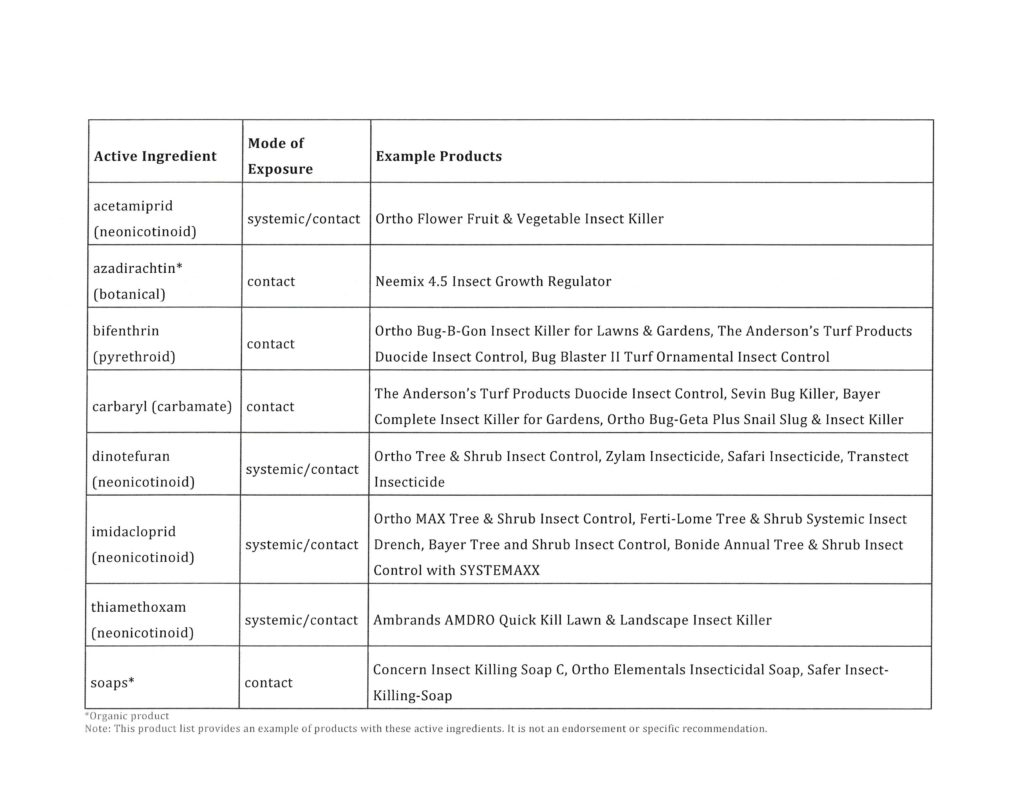
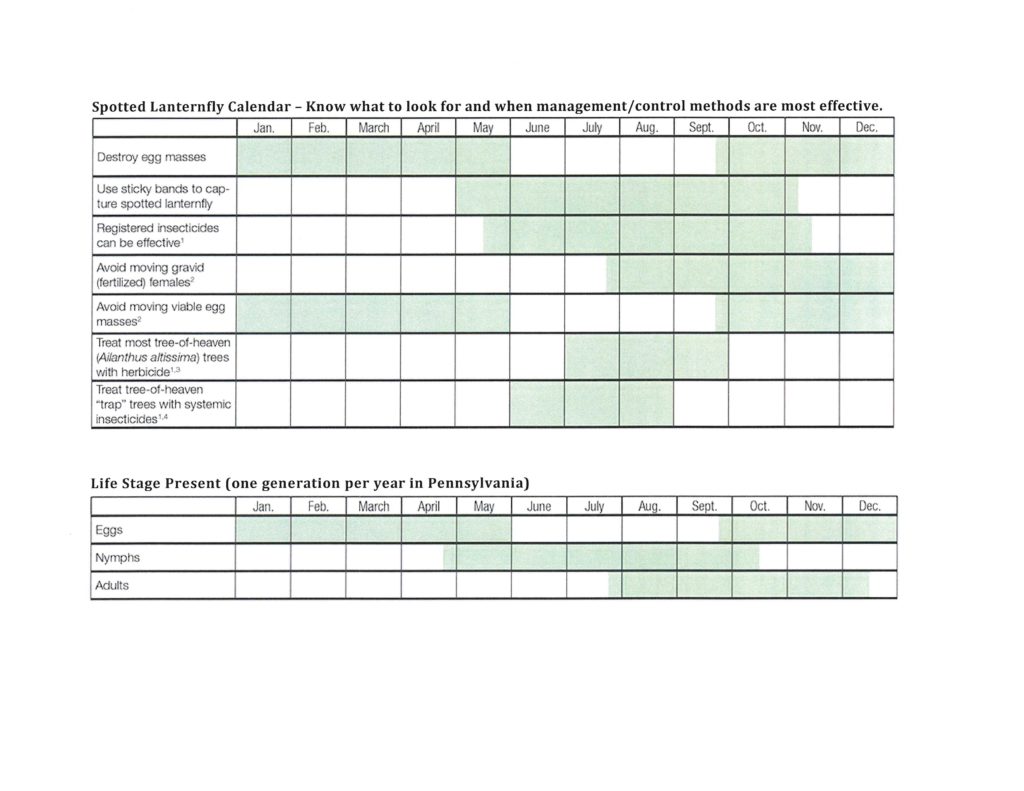
Questions may be answered through the PA Dept. of Agriculture at http://www.agriculture.pa.gov/protect/plantindustry/spotted_lanternfly/Pages/default.aspx
Spotted Lanternfly Management Options:
Management Options for SLF-Tree Banding
Volunteers Needed: Spotted Lanternfly Volunteer Letter with link to training.docx
Helpful Tips & Info: SLF Flyer
How to control SLF: SLF Control 9-13-2017
Information provided by your Township Officials comes by recommendation of the Penn State Extension. Recommendations made by the Penn State Extension can only be made through proven research. If you have further questions regarding products that will kill the SLF, please contact the Berks County Penn State Extension at 610-378-1327, and speak to a Master Gardener.
